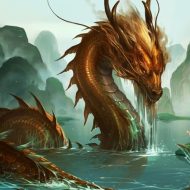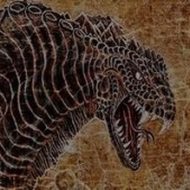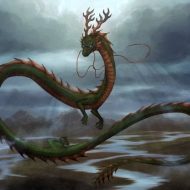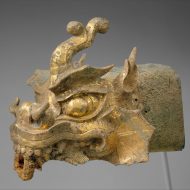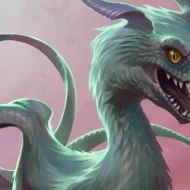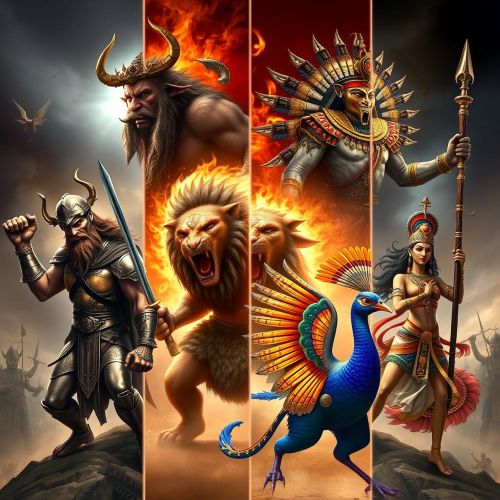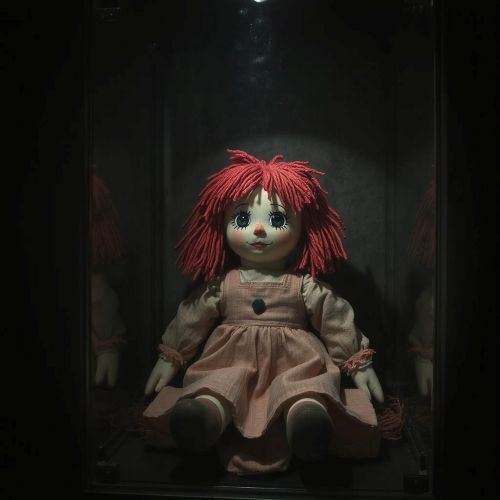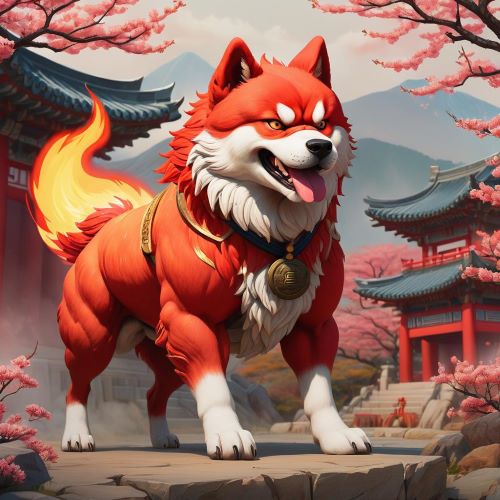Imugi : The Lesser Dragon
Listen
At a glance
| Description | |
|---|---|
| Origin | Korean Mythology |
| Classification | Animals |
| Family Members | N/A |
| Region | South Korea |
| Associated With | Protection, Rivers, Lakes |
Imugi
Introduction
The Imugi emerges as a captivating creature within Korean mythology. Frequently characterized as a lesser dragon or proto-dragon, this mythical being bears a striking resemblance to a massive serpent, exuding an aura of benevolence. Amidst the diverse entities that populate Korean mythology, the Imugi distinguishes itself as a mesmerizing and enigmatic serpent-like entity. Often portrayed as either a giant serpent or dragon, the Imugi occupies a distinct niche in Korean folklore, captivating minds with its mysterious essence and engaging narratives.
Physical Traits
Imugis are commonly illustrated as sizable, python-like beings, often dwelling in aquatic environments or caves. Despite their serpentine visage, these creatures are believed to wield the extraordinary ability of transformation, capable of shape-shifting into human forms or assuming the guise of other creatures. Described as serpents or dragons of remarkable size and length, the Imugi presents a majestic and formidable appearance, adorned with scales that glisten like precious jewels and eyes that shimmer with otherworldly wisdom.
Certain accounts even suggest the presence of multiple heads, each representing distinct facets of its personality or power. The serpentine form of the Imugi holds profound symbolism, underscoring its inherent connection to water, a pivotal element within the tapestry of Korean mythology.
Family
In the realm of Korean mythology, Imugis are classified as members of the dragon family. It is held that these beings harbor the potential to evolve into full-fledged dragons, recognized as yong or mireu, should they successfully capture a Yeouiju—a mythical orb—that descends from the heavens. Alternatively, another rendition of the folklore posits that an Imugi must endure for a millennium to attain the esteemed status of a dragon. Although the Imugi lacks direct ties to specific deities, it is credited with a divine lineage, establishing its significance within the cosmic order. Narratives surrounding the Imugi often convey its aspiration to ascend to a higher state, typically involving a transformative journey culminating in the coveted status of a genuine dragon.
Other names
Imugi goes by several alternative names, such as Ishimi, Miri, and Bari. This mythical entity is recognized by diverse names across different regions of Korea, introducing nuanced layers of complexity to its mythological identity. Depending on the account, it might be denoted as “Imugwi” in some instances, while in others, the variations “Imugŭi” or “Imu” may be used.
Powers and Abilities
Imugis are linked to auspiciousness, recognized as benevolent spirits of water and caves. As creatures believed to possess the power of transformation into various forms, Imugis hold a special place in Korean folklore. The acquisition of a Yeouiju is said to bestow upon an Imugi the blessings of omnipotence and the ability to create at will. According to the rich tapestry of Korean folklore, an Imugi does not originate as a dragon but must undergo a transformative process to attain its ultimate form. The legend narrates that the Imugi must reside in a cave for a millennium, absorbing the energies of both the earth and heavens, before achieving the esteemed status of a genuine dragon.
Modern Day Influence
The Imugi’s impact extends into present-day Korean culture, particularly within the realms of fantasy. A notable example is the 2020 South Korean drama “Tale of the Nine-tailed,” where an Imugi takes center stage as the main character. The creature’s mythological significance, coupled with its association with good luck, has established it as a popular symbol in contemporary Korean media. In the world of art, literature, and filmmaking, creators frequently find inspiration in the Imugi myth, weaving its themes into their works to impart messages of self-discovery and the enduring power of perseverance.
In recent times, the Imugi has transcended its cultural origins and made a mark on global popular culture. Fueled by the universal allure of mythical creatures and epic narratives, the Imugi has become a captivating figure in fantasy literature, art, and entertainment, captivating audiences beyond the borders of Korea.
Related Images
Frequently Asked Questions
What is lorem Ipsum?
I am text block. Click edit button to change this text. Lorem ipsum dolor sit amet, consectetur adipiscing elit. Ut elit tellus, luctus nec ullamcorper mattis, pulvinar dapibus leo.
What is lorem Ipsum?
I am text block. Click edit button to change this text. Lorem ipsum dolor sit amet, consectetur adipiscing elit. Ut elit tellus, luctus nec ullamcorper mattis, pulvinar dapibus leo.
What is lorem Ipsum?
I am text block. Click edit button to change this text. Lorem ipsum dolor sit amet, consectetur adipiscing elit. Ut elit tellus, luctus nec ullamcorper mattis, pulvinar dapibus leo.
What is lorem Ipsum?
I am text block. Click edit button to change this text. Lorem ipsum dolor sit amet, consectetur adipiscing elit. Ut elit tellus, luctus nec ullamcorper mattis, pulvinar dapibus leo.
What is lorem Ipsum?
I am text block. Click edit button to change this text. Lorem ipsum dolor sit amet, consectetur adipiscing elit. Ut elit tellus, luctus nec ullamcorper mattis, pulvinar dapibus leo.

